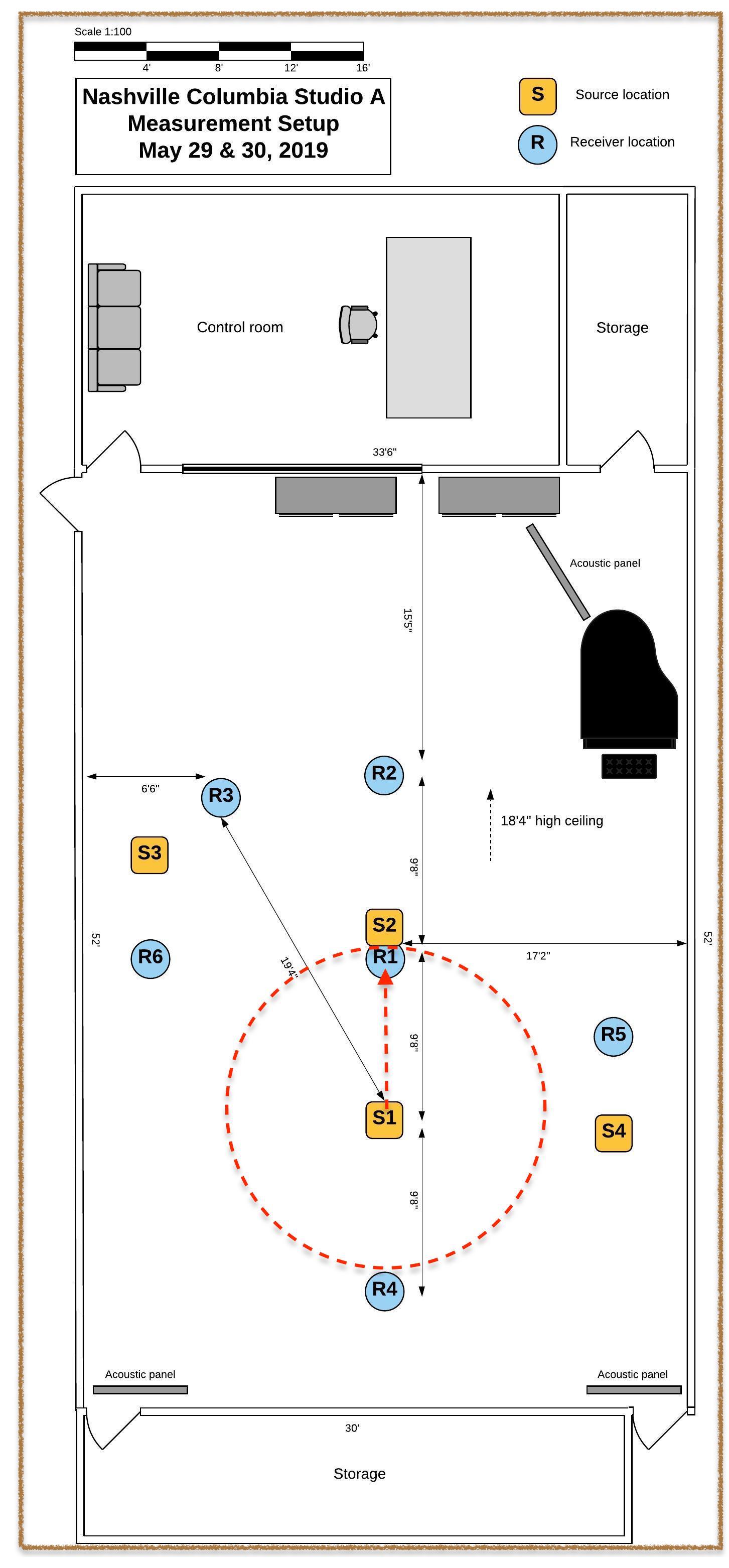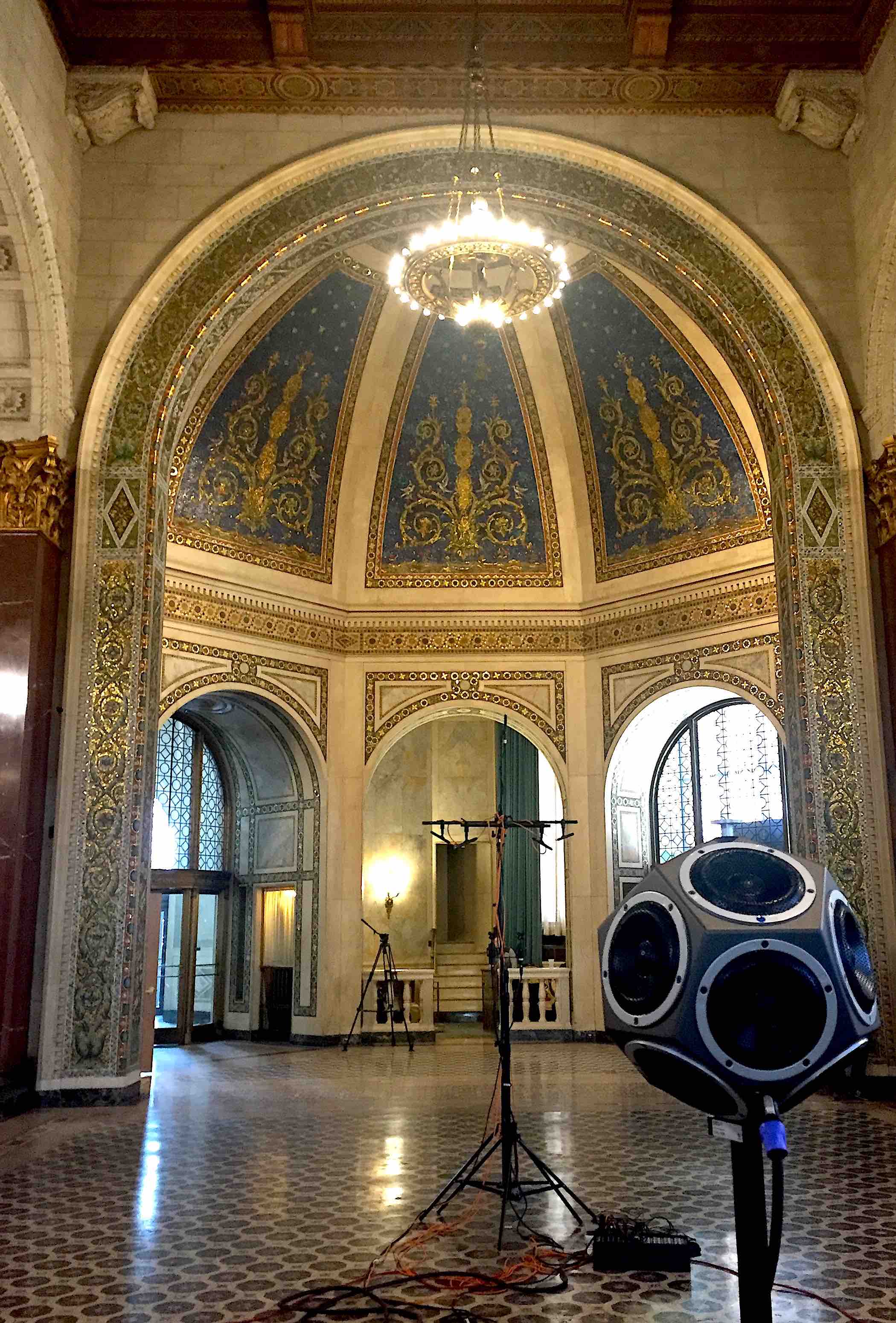Digital Preservation and Access to Aural Heritage Via A Scalable, Extensible Method
BINAURAL AURALIZATION #1: Comparison of Two Case-Study Listening Perspectives
This computational auralization is scaled for individual listening over headphones or earbuds.
We are also producing multichannel auralizations for demonstrations in public listening spaces.
Music Row Recording Studio, Nashville, TN (left plan, below)
vs.
19th-century Byzantine Revival Bank, Rochester, NY (right plan, below)
LISTENING PERSPECTIVE: Centralized Source with Close Listener (Proportional)
To create each auralization, a "dry", close-up recording of a mandolin (using one microphone, without acoustical context) was convolved with binaural/two-channel acoustical impulse responses as documented in the measurement session photographs below each site plan. Convolution is the name of a digital signal process that can be used to virtually locate one sound in another place, by mathematically combining audio (the mandolin recording) with measured data (the impulse response) from that space.
Although the musical stringed instrument, mandolin is a culturally appropriate sound source for the recording studio, it is less appropriate for the bank; however, using the same sound from similar perspectives in each building demonstrates the acoustical contrasts of the aural heritage of these architectural environments.
How would you describe the differences and similarities of the sonic environments presented in these auralizations? How do you think the acoustical differences affect social interactions in these spaces during their intended uses? These are some of the social and historical questions that can be explored and tested using aural heritage data and auralization interfaces, for both researchers and public audiences.
To listen: click on the player located below each architectural plan.
Best heard using headphones/earbuds.



